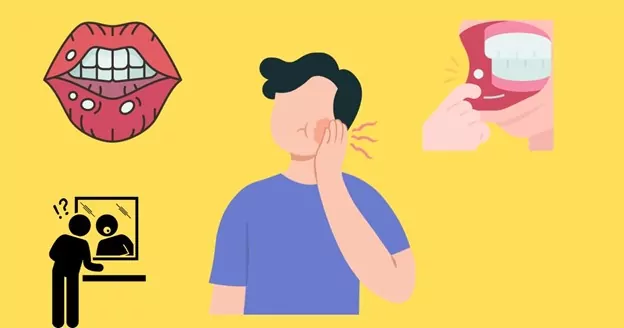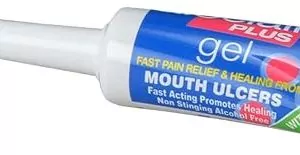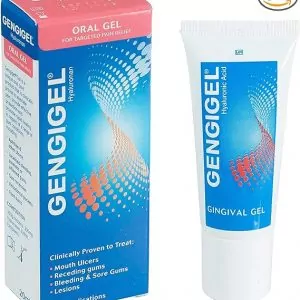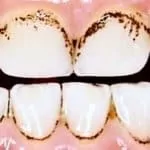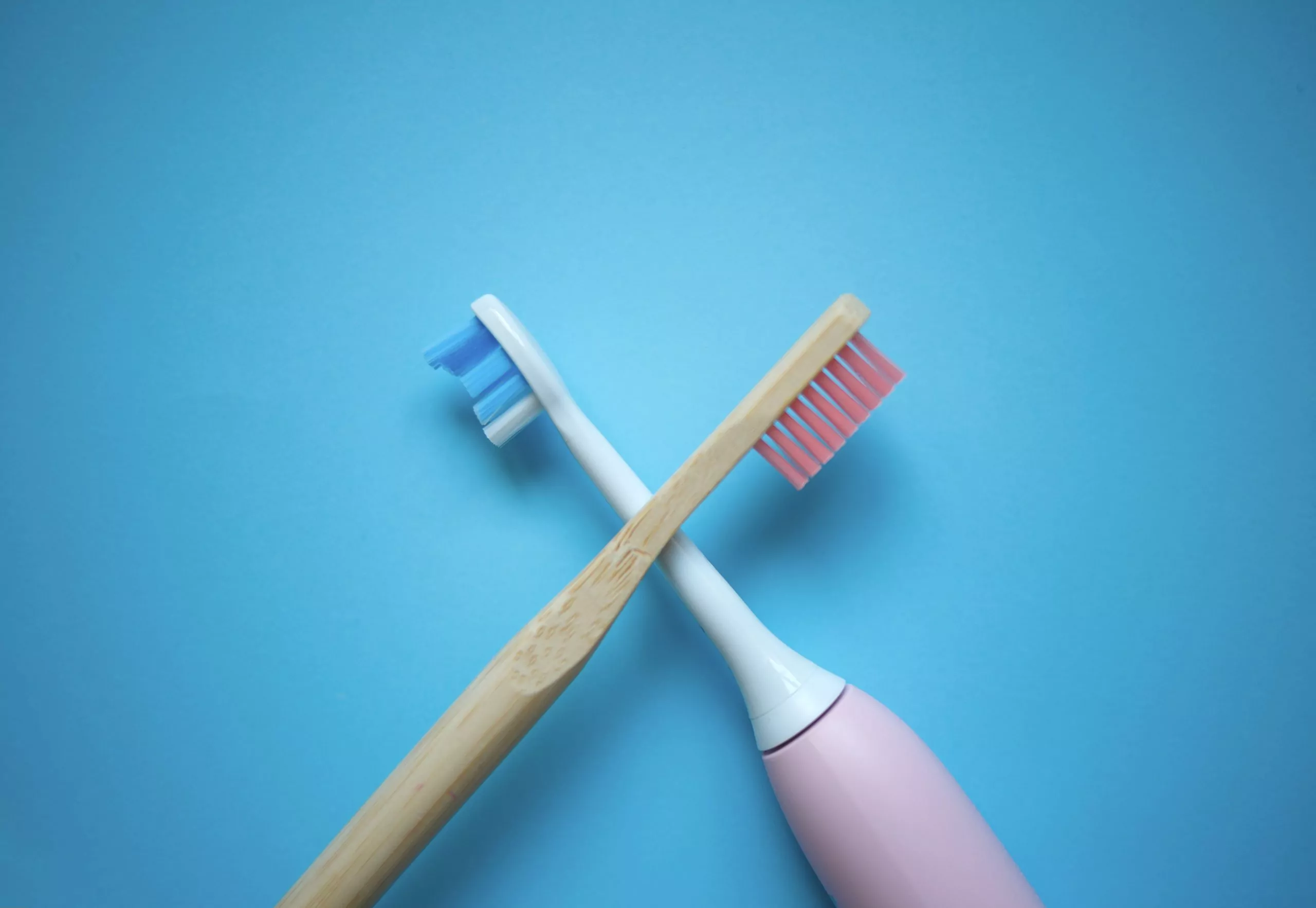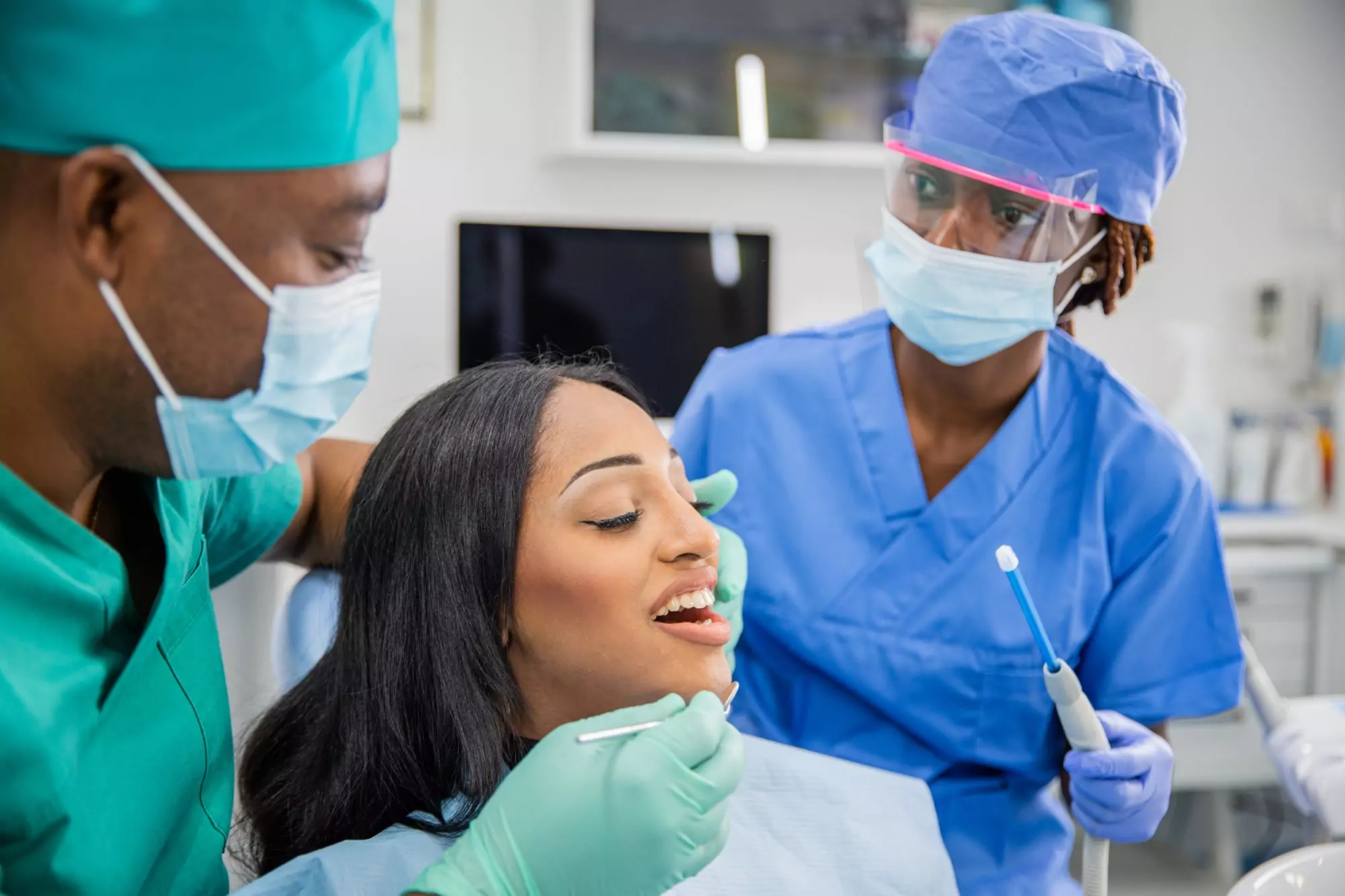Oral health forms a significant part of our overall well-being. Yet, many overlook this crucial aspect until they face discomfort or pain.
About 20% of population in UK report mouth ulcers regularly, so having awareness about the various types of oral ulcers is essential for everyone.
This blog post raises awareness about oral ulcers and mucosal lesions commonly encountered by us in our lives that may or may not cause significant distress if not addressed promptly.
What are Oral Ulcers and Oral Mucosal Lesions?
Oral ulcers, also known as canker sores, are small, shallow lesions that develop inside the mouth. They can be white or yellow and have a red border. These ulcers can occur anywhere in the mouth, including the gums, tongue, lips, or cheeks.
Oral mucosal lesions, on the other hand, are changes in your mouth’s skin (the mucosa) that can manifest as lumps, patches, or sores. These lesions can result from infections, irritants, systemic diseases, or malignancies. They may appear as white, red, or pigmented areas and can be flat or raised.
Common Causes of Oral Ulcers and Oral Mucosal Lesions
Several factors can cause oral ulcers and mucosal lesions, including:
- Trauma: Accidentally biting your tongue or cheek, using a hard-bristled toothbrush, or wearing ill-fitting dentures can all cause trauma to the mouth and lead to ulcers or lesions.
- Viral infections: Certain viruses, such as herpes simplex, can cause cold sores or fever blisters on the lips or around the mouth. These are contagious and can recur.
- Bacterial infections: Bacteria like Streptococcus can cause oral thrush, a fungal infection leading to white tongue or inner cheeks lesions.
- Allergies: Some people may develop allergic reactions to certain foods, medications, or oral care products, leading to ulcers or lesions in the mouth.
- Autoimmune diseases: Conditions like lupus and inflammatory bowel disease can cause mucosal lesions in the mouth.
- Stress or hormonal changes
- Certain foods or chemicals
- Underlying medical conditions (like Crohn’s disease)
Mucosal lesions can stem from:
- Tobacco use
- Long-term alcohol consumption
- Oral cancer
- Infections such as syphilis or HIV
Symptoms to Watch For
Besides visible sores or changes in mouth lining color, other symptoms include:
- Pain or discomfort in the mouth
- Difficulty eating or drinking
- Swelling in the mouth or nearby lymph nodes
- Fever or feeling unwell
- Some oral ulcers or mucosal lesions may not cause noticeable symptoms, especially in the early stages.
Let’s briefly discuss some common oral ulcers and mucosal lesions with some details for your awareness.
Canker Sores
The typical oral or mouth ulcers, “Canker sores”, also known as aphthous ulcers, are small, shallow lesions in the soft tissues of your mouth.
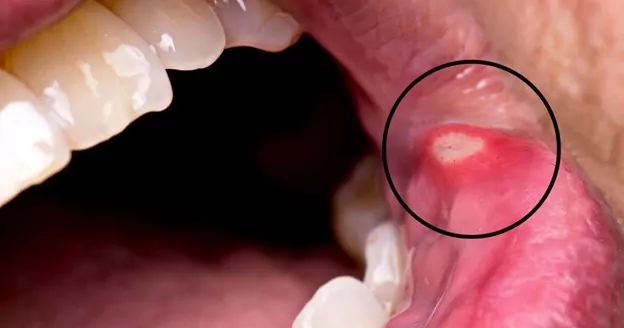
They come in three types: Minor canker sores, major canker sores, and herpetiform canker sores.
Minor Canker sores
Minor canker sores are small and oval, typically healing within one to two weeks without scarring.
Major canker sores
Major canker sores are more extensive and deeper, often with irregular edges, and they can take several weeks to months to heal and may leave a scar.
Herpetiform canker sores
Herpetiform canker sores are pinpoint size, occur in clusters of 10 to 100, and often merge into one large ulcer.
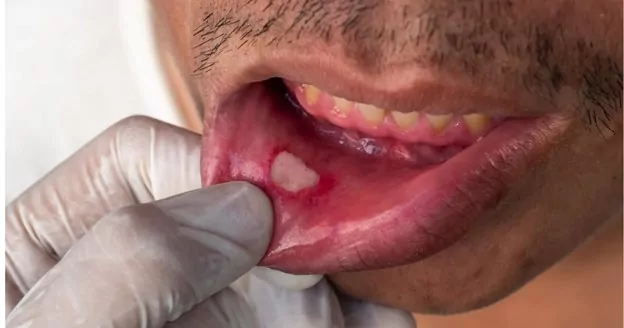
Why Canker Sore forms?
The exact mechanism of canker sore formation is still unknown, but tissue injury and stress are thought to trigger their development. Other factors, such as certain foods, hormonal changes, or underlying health conditions, may also play a role.
However, these are thought to result from an immune system response that mistakenly targets the oral mucosa cells, leading to inflammation and ulcer formation. The lining of the mouth is sensitive, and any disruption in the delicate balance of factors can contribute to the development of aphthous ulcers.
Steps to Take to Reduce the Risk of Canker Sores
To reduce the risk of canker sores, maintain good oral hygiene, avoid spicy or acidic foods that irritate your mouth, and manage stress with techniques like meditation or exercise.
Regularly visiting the dentist can also help detect potential oral health issues early.
Treatment of Canker sores
Regarding treatment, most minor canker sores don’t require any, as they usually heal independently.
However, treatments for significant or persistent sores can include mouth rinses containing dexamethasone to reduce inflammation and pain, topical pastes to help relieve pain and speed healing, or oral medications.
In some cases, cautery of sores or nutritional supplements might be recommended if the diet lacks certain nutrients, such as vitamin B-12, zinc, folic acid, or iron. Consulting a healthcare professional for a proper diagnosis and treatment plan is essential.
Cold Sores
Often mistaken for canker sores, cold sores are different, as the herpes simplex virus causes them and are highly contagious. Also known as fever blisters, they typically appear on or around the lips but can occasionally affect the insides of the mouth or the face.

Types of Cold Sores
There are two main types of Herpes Simplex Virus (HSV), both of which can cause oral and genital herpes.
HSV-1 usually causes cold sores in the mouth and lips.
HSV-2 is more commonly associated with genital herpes.
However, both strains can cause blistering sores in either location.
Mechanism of Cold Sores
Cold sores occur when the HSV, which lies dormant in the nerve cells, gets reactivated. This could be due to stress, illness, hormonal changes, exposure to sunlight, or immune system changes.
Once activated, the virus moves toward the skin surface, causing an itching or tingling sensation, followed by fluid-filled blisters.
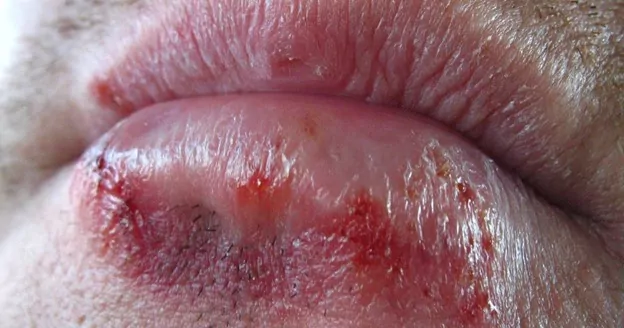
Signs & Symptoms of Cold Sores
The first sign of a cold sore is usually a tingling, itching, or burning sensation around the mouth.
After this, small fluid-filled blisters appear, usually on the edges of the lower lip.
After a few days, these blisters burst, forming a crust that dries up and falls off.
Other symptoms can include fever, sore throat, and swollen lymph nodes.
How to Manage Cold Sores
While there is no cure for HSV, cold sores often heal within a week or two.
However, if cold sores are frequent, severe, or causing distress, antiviral creams or tablets can help speed up the healing process, prevent recurrence, or even reduce the chances of transmitting the virus to others.
To help manage the symptoms of cold sores, avoid touching the area and refrain from kissing or sharing personal items like toothbrushes or eating utensils.
Protect your lips from the sun using a lip balm with SPF, and try to manage stress through techniques like exercise, meditation, or yoga.
It’s always recommended to consult with a healthcare professional if you have any concerns about managing cold sores.
Lichen Planus
Lichen Planus is a relatively common inflammatory condition affecting the skin and mucous membranes. It manifests as itchy, purplish, flat-topped bumps on the skin and white, lacy patches in the mouth or genitals.
Lichen planus is not contagious, and the exact cause is unknown, but it is often associated with an immune system response triggered by certain medications, allergens, or underlying health conditions.
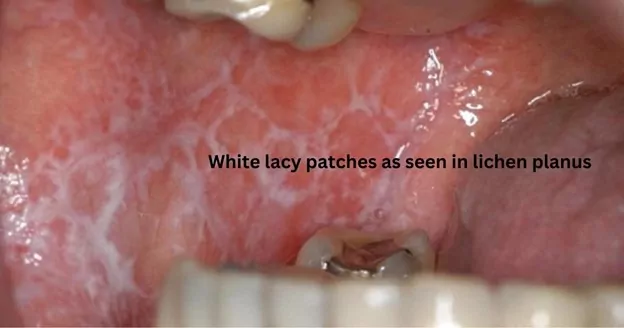
Types of Lichen Planus
Depending on which part of the body it affects, Lichen Planus can be classified into:
- Cutaneous Lichen Planus: This is the most common type affecting the skin and is characterized by shiny, flat-topped, purplish bumps.
- Oral Lichen Planus: This type affects the mouth, leading to white lacy patches or sore gums.
- Genital Lichen Planus: This type leads to white patches similar to Oral Lichen Planus but in the genital area.
- Lichen Planopilaris: This type affects hair-bearing regions, most commonly the scalp, and can lead to permanent hair loss.
- Nail Lichen Planus: This type affects the nails, causing ridges to form, thinning, or nail loss.
Mechanism of Lichen Planus
Although the exact cause of lichen planus is unknown, it is believed to be related to an immune system response.
It’s suggested that T cells, a type of white blood cell, are triggered mistakenly to attack the skin or mucous membrane cells, resulting in inflammation and the characteristic rash or lesions.
Signs & Symptoms of Lichen Planus
Lichen planus typically presents as purplish flat-topped bumps that are itchy. In the mouth, it forms lacy white patches, occasionally accompanied by painful sores.
When affecting the nails, it can lead to ridges on the nails, thinning, or even nail loss. The severity of the symptoms can vary significantly from person to person, and some may not experience any symptoms, especially in the early stages.
Management of Lichen Planus
While there’s no cure for lichen planus, treatments aim to alleviate symptoms and speed healing.
Options may include topical corticosteroids to reduce itching and inflammation, oral medications, light therapy, or retinoid creams. Home remedies such as cool compresses and oatmeal baths can help soothe the skin.
It’s important to avoid scratching or picking at the affected areas to prevent infection, and consulting a healthcare professional is recommended for a proper diagnosis and treatment plan. Regularly visiting a dermatologist and a dentist for check-ups can help monitor and manage the condition effectively.
Candida Oral Lesions
Also known as oral thrush or oropharyngeal Candidiasis, Candida oral lesions are a common fungal infection in the mouth, typically caused by Candida fungus, especially Candida albicans.
While it can affect anyone, it’s more prevalent among young children, older people, or those with weakened immune systems.

Types of Candida Oral Lesions
Oral Candidiasis can be classified into three main types:
- Acute Pseudomembranous Candidiasis: Characterized by creamy white lesions in the mouth, often resembling cottage cheese.
- Chronic Atrophic Candidiasis: This type mainly affects adults with dentures and appears as red, inflamed areas under the denture.
- Chronic Hyperplastic Candidiasis manifests as white plaques that cannot be scraped off easily.
Mechanism of Candida Oral Lesions
Candida yeast is a normal organism in the mouth but can overgrow and cause symptoms when an imbalance occurs in the body. This imbalance can be triggered by various factors like illnesses, medications, or stress, leading to an overgrowth of Candida in the mouth and the development of oral thrush.
Causes of Candida Oral Lesions
Oral Candidiasis can be caused by various factors, including a weakened immune system, diabetes, wearing dentures, using corticosteroid inhalers, or having a medical condition like dry mouth.
Certain medications, such as antibiotics or corticosteroids, can also predispose one to develop this condition.
Signs and Symptoms of Candida Oral Lesions
The primary sign of oral thrush is white, creamy lesions in the mouth, often on the tongue or inner cheeks, but sometimes on the roof of the mouth, gums, tonsils, or back of the throat.
These lesions can be painful and might bleed when scraped. Other symptoms may include a cottony feeling in the mouth, loss of taste, and difficulty swallowing.
Managing and Preventing Candida Oral Lesions
Always consult a healthcare professional for a proper diagnosis and treatment plan first.
Oral thrush can be managed with antifungal medications, tablets, lozenges, or a special mouth rinse.
Maintaining good oral hygiene is crucial for prevention. This includes brushing your teeth twice daily, flossing regularly, and replacing your toothbrush regularly.
Also, for those wearing dentures, ensure they fit correctly and are cleaned every night. Healthy lifestyle choices, like a balanced diet and regular exercise, can help strengthen the immune system and prevent the overgrowth of Candida.
Other Types of Oral Ulcers and Lesions
Many other types of oral ulcers and mucosal lesions are present. They may or may not exist with a medical condition.
These include:
- Erythema Multiforme
- Angular Cheilitis
- Irradiation Ulcer
- Erythroplakia
- Ulcers associated with various systemic disorders
- Discoid Lupus Erythematosus
- Behcet’s disease
- Reiter’s syndrome
- Salivary Gland Ulcers and Infections
- Salivary Gland Tumors
- Oral Cancer Lesions and many more
Each condition has unique characteristics and causes, making it crucial to consult a healthcare professional for proper diagnosis and treatment.
Remember always to seek professional medical advice for any persistent or concerning symptoms.
- Proper Diagnosis and Treatment: As with any oral condition, it is essential to consult a healthcare professional for an accurate diagnosis and treatment plan.
- Each type of ulcer or lesion may require different treatment methods, so seeking professional advice is crucial before trying home remedies.
When to See a Dentist
While a minor ulcer or lesion may heal on its own, it is crucial to consult a dentist if:
- The ulcer or lesion persists for more than two weeks
- There are recurring sores
- The pain is severe or unmanageable
- Other concerning symptoms are present
- If the ulcer persists beyond two weeks, recurs frequently, or is associated with other symptoms like fever, weight loss, or difficulty swallowing.

Prevention Tips
While it’s not always possible to prevent oral ulcers and lesions, these steps can help maintain oral health and reduce the risk:
- Maintain good oral hygiene
- Use an antimicrobial mouthwash, like Corsodyl Mouthwash. This won’t stop mouth ulcers from returning, but it will help in healing and preventing infection
- Incorrect brushing techniques ( aggressive brushing) may damage the gums, leading to an ulcer. Talk to your dentist about the right toothbrush for you.
- Avoid spicy, acidic, hot food and trigger foods until your ulcer heals
- Eat a balanced diet with proper nutritional value.
- Avoid smoking and limit alcohol intake
- Manage stress
General Treatment Options
Summarizing treatment options available for oral ulcers and mucosal lesions based on the underlying cause. It can often include the following options:
- Topical medications: Gels or creams applied directly to the ulcer or lesion can help reduce pain and inflammation.
- Mouth rinses: Antimicrobial mouthwashes (Corsodyl Mouthwash) can help prevent secondary infection and promote healing.
- Oral medications: Oral medications such as antibiotics or antivirals may be necessary if a systemic condition or infection causes the ulcer or lesion.
- Dietary changes: For ulcers triggered by certain foods, a change in diet can prevent further occurrences.
- Stress management: Stress management techniques such as meditation or yoga may be beneficial if stress contributes.
- Surgery: In rare cases, especially where oral cancer is involved, surgery may be required to remove the lesion.
- Cancer treatments: If the lesion is cancerous, radiation therapy or chemotherapy might be necessary.
Remember, it’s always important to consult a dental or medical professional for a diagnosis and personalized treatment plan.
Treatment varies based on the cause and severity of the ulcer or lesion.
It could range from topical creams or gels for pain relief, antiviral medication for viral infections, or even surgery for malignant lesions. It all depends on the diagnosis made by your dentist.
Addressing Misconceptions
One common misconception is that all oral ulcers and lesions are a sign of cancer. While it’s true that they can be a symptom of oral cancer, many ulcers and lesions result from benign causes.
Remember never to self-diagnose and always consult a healthcare professional for persistent or concerning symptoms.
Case Examples for Awareness
Case 1: A patient ignored an ulcer in her mouth, assuming it was a canker sore. When it didn’t heal after a few weeks, she visited a dentist and was diagnosed with oral cancer. This highlights the importance of seeking professional advice for persistent ulcers.
Case 2: A man noticed a small lump on his gums and promptly consulted his dentist. It turned out to be a benign lesion that was easily treated. His prompt action led to successful treatment without complications.
Case 3: A young woman believed that her recurrent oral ulcers were due to her spicy diet. After learning about the various causes of oral ulcers, she sought a dental consultation and discovered an underlying autoimmune condition.
Conclusion
Taking care of your oral health is not just about maintaining a beautiful smile; it’s about preserving your overall health and quality of life.
While oral ulcers and mucosal lesions might seem minor issues, they can indicate underlying health problems if persistent or recurrent.
Always consult a dental professional if you notice any changes in your mouth. Remember, prevention is better than cure; early detection can make all the difference!



